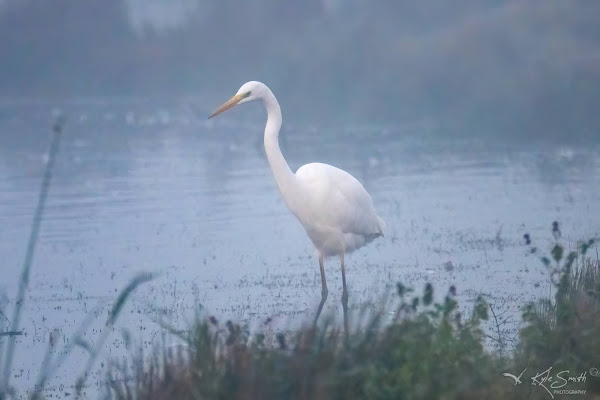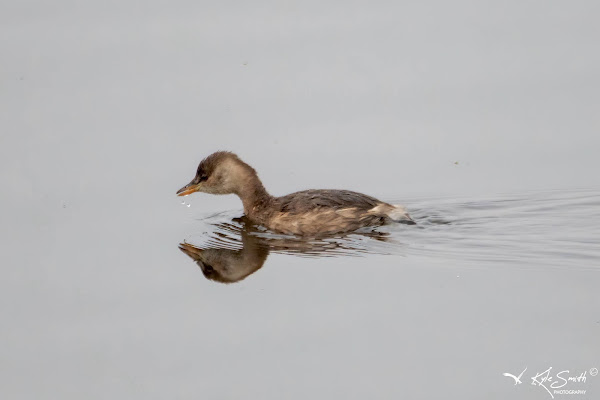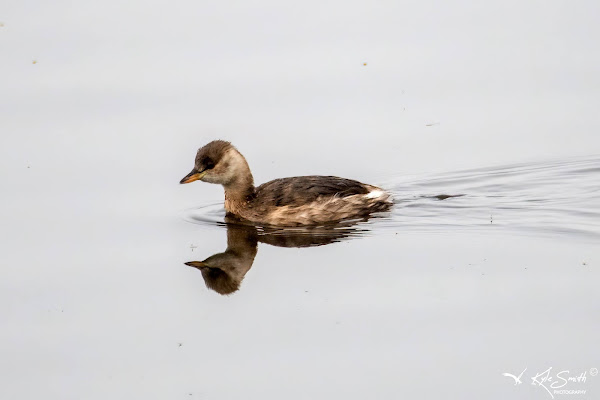We that didn't go as planned ... deciding how to spend the weekend I got in touch with Kevin Heath and came to the decision that the black-necked grebe (reported late Friday afternoon at Standlake) was the bird to target. We looked on the map to locate the site and could see lanes from the main road down to what looked like a caravan park. As we departed in the dark the sky was sparkling with stars - a clear morning gave us hope - we'd suffered a few weeks ago when at Wildlife BCN Summer Leys with fog lingering past mid-morning. No sooner had we left Banbury for Standlake than we started to run into pockets of fog.
We turned down a lane and I started to feel that this wasn't what we were meant to do - I talked with Kev and he thought this looked familiar and that he'd been down here fishing in the past. After a hundred yards or so the scrub along the roadside encroached to such an extent that I couldn't help but worry that the sides of the car were getting scratched - I considered reversing back up the lane but it appeared I was halfway and so much better to head forward than try and negotiate the narrow lane in reverse - we reached the clearing and abandoned the cars (tight against the hedge so as to not cause an obstruction) making for the hides. This was not the lane Kev thought it was.
We reached the North Shore bird hide only to find that the door was locked - this was turning out to be a poorly researched trip. I looked on the web and found a Reserve brochure which indicated the site was indeed a key holder reserve.
From the leaflet we learned that in the 1990s Oxfordshire County Council granted permission to extract gravel from this area of farmland, it also provided a wonderful opportunity to work with the mineral company to create a new nature reserve next to the River Thames. Extraction was completed in 2000 and since then a mosaic of wetland habitats have been established on this 25ha site, that now supports a wealth of wildlife. To date more than 150 species of bird have been recorded with an increasing number successfully raising young during the summer.
In order to avoid disturbing the resident wildlife, particularly during the nesting season, the reserve has been carefully designed to allow visitors to view the whole site from two hides. The hedges, trees and scrub that form the boundary of the reserve provide good cover for wildlife and the many berries and seeds produced each autumn attract various species of birds.
We worked our way round to the Langley Lane bird hide hoping that someone would be in residence but were disappointed. We had just passed a gate that had some views over the water and made our way back there. Although a restricted view, we could make out various ducks, little grebe, and a great white egret. I took some photos through the fog enveloping the site and managed to extract some detail.
We were fortunate to catch sight of the black-necked grebe as it fed and preened far to the right of the hide, but it then headed away and to the far left and was lost from view. Eventually the little grebes put on a show as the sun burned through the fog.
On the far north side of the lake, while on our marches to and from the two hides, we watched sparrowhawk and two jays pass over then counted at least four Cetti's warbler. While waiting for the fog to lift we also had a great spotted woodpecker knocking away as it fed in a dead tree.
The journey back up the lane was just as traumatic but in the end the damage was limited to long scuffs which polished out with only moderate effort - got away with that big time. A pleasant first visit but we will have to organise a key and a better parking spot.
The range of species we could see were limited to: black-headed gull, black-necked grebe, blackbird, blue tit, Canada goose, carrion crow, Cetti's warbler, collared dove, coot, cormorant, dunnock, gadwall, goldfinch, great crested grebe, great spotted woodpecker, great tit, great white egret, grey heron, greylag goose, jay, little grebe, magpie, mallard, moorhen, mute swan, robin, shoveler, sparrowhawk, starling, teal, tufted duck, wigeon, woodpigeon and wren.





No comments:
Post a Comment